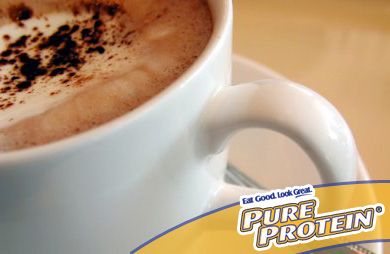If you’re trying to get rid of some of that extra weight – whether it be 5 pounds or 50 – fitness expert Chris Powell says one factor trumps all else.
“When it comes to weight loss, diet is at the foundation for everything,” said Powell, the host of ABC’s “Extreme Weight Loss.”
So while healthy foods form the basis, exercise accelerates the results. And it might be surprising to know that cheating on your diet, a quick workout and even the dreaded carbs are all part of Powell’s plan, outlined in his second book, ““Choose More, Lose More.”
“Losing weight is an everyday choice,” said Powell. “It is about rewiring your mind, retraining yourself and looking at weight loss from a totally different perspective so that we make it an active decision every single day.”
Diet
Powell said the single biggest diet mistake lies in thinking you have to accomplish it all at once.
“People will say, ‘Diet starts Monday so that means I have to restrict, restrict, restrict, restrict,’” said Powell. “Just make one or two tiny changes. Maybe just take the soda out of lunchtime. Or maybe try eating breakfast. You know, just those tiny little changes that are truly attainable.”
Reward yourself for sticking to healthy foods by scheduling one or two cheat days in between.
“If I say to you, ‘Look, you can't have pizza anymore,’ what is it that you want?” said Powell. “Your body is naturally going to crave what you can't have. You want pizza and ice cream, and as you are losing weight, you're naturally going to crave all these things. So it is nice to know that in a few days you can have it. You can reward yourself.”
A reward means carbs, but they come with a stigma. So Powell not only recommends “carb cycling” but says carbs are actually good for a healthy diet. It’s a method that dietitians have recommended for the last few decades, alternating high-carb and low-carb days.
“On the low-carb days, you get the results of a low-carb diet,” explained Powell. “But on a high-carb day, you actually boost your metabolism, you build muscle. So you get this beautiful offset of fat-loss and then metabolic boosting. You eat high-carbs on the days you want to boost your metabolism and build some muscle. On low-carb days, you burn a lot of fat.”
Exercise
When Powell was a child, he was the smallest in his class and a target for bullies. But his parents surprised him one day when he was 14 and came home from school. They had replaced all the living room furniture with a gym that included a little weight stand.
“That's when I first found exercise, and it changed my life,” Powell recalled. “It empowered me. It made me feel good about myself. And that is why I am so excited about this stuff, because I know what it can do for people.”
And just as with diet, Powell – who prefers to work out in the mornings -- said the biggest mistake when devising a fitness plan is trying to tackle too much. An hour of cardio every single day is just not necessary.
“You've got to start small and just begin moving,” said Powell. “We're talking maybe 5 or 10 minutes. Because if you say 45 minutes, sure enough a day's going to come where you simply can't fulfill that promise to yourself. It's not just about the exercise. It's about making promises and keeping promises to yourself.”
And Powell said that kind of promise can be fulfilled in less than 10 minutes every weekday. He calls them “9-Minute Missions,” doing as many rounds of high-intensity exercises for 2 minutes and taking the next minute off, then repeating the cycle twice more. For example, a mission targeting the lower body might include 30 high-knees, 20 back lunges and 10 bridge-ups. A total body mission includes something which Powell calls “Five Alive”: 5 burpees, 5 twisters, 5 marching soldiers.
Powell’s top exercise: the burpee, a combination squat thrust-pushup-jumping jack.
“The best thing about the burpee is it’s totally scalable,” explained Powell. “The people that I work with who are 400 to 500 pounds, they simply put their hands down and crawl down to the ground and slowly lower their belly down to the ground, they push up, and they walk it forward. As long as you start it standing, put your chest and thighs on the ground and then stand back up, you've got a burpee.”
And coming in second for top exercises are squats and lunges. Whether a burpee or a lunge, these workouts are the gifts that keep on giving because they increase the body’s metabolic rate, burning calories even while you’re sitting at a desk.
“You know the beauty of it is, there’s some magic that’s happening inside our body when we do these short-term, high-intensity work outs.”


















